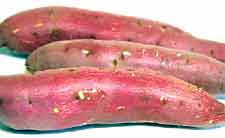How does the food you eat affect your arthritis? This is what this two-part article attempts to answer along with advice on the most sensible diet to follow.
The right diet can certainly help some people with arthritis and rheumatism. If you are overweight and suffer from arthritis, one of the most important things you can do to help yourself is to change the amount and type of food you eat. Recent research has found several new links between arthritis and diet.
It is also important to consider whether your regular diet is giving you all the important basic nutrients including minerals such as calcium and iron. If it does not, then your general health will suffer and this may have an effect on your arthritis.
How can the diet be changed to help relieve arthritis?
The four golden rules that should be followed are: Eat a balanced and varied diet to maximize your intake of vitamins, minerals, antioxidants and other nutrients you need which will help to keep your weight within the recommended range; change the type of fats and oils you eat and include oily fish in your diet; eat a more Mediterranean-style diet with plenty of fruit and vegetables; and take regular exercise.
Current evidence suggests that oily fish is likely to be beneficial if you have an inflammatory type of arthritis (such as rheumatoid arthritis, reactive arthritis, psoriatic arthritis or ankylosing spondylitis). Therefore, it is important to know what type of arthritis you have.
Why is weight so important?
The most important single link between diet and arthritis is your weight. Being overweight puts an extra burden on the weight-bearing joints (back, hips, knees, ankles and feet) when they are already damaged or under strain. Because of the way joints work, the pressure in your knee joints is 5-6 times your body weight when you walk. Even a small weight loss can make a big difference to your joints. Too much body fat may also increase inflammation in the body, making your joints more painful. Some evidence for this can be seen in the fact that achieving a healthier weight can improve the results of blood tests for inflammation such as CRP (C-reactive protein) and ESR (erythrocyte sedimentation rate).
How can I lose weight
but still eat a healthy diet?
Crash and fad diets are not recommended because most do not provide you with a balanced meal. The only way to lose weight permanently is to make permanent changes to the way you eat or the amount of exercise you do.
Your body needs food to supply energy and a variety of vitamins and minerals. If your diet contains more energy than you burn up, your body will convert the extra energy to fat and you will put on weight. On the other hand, if your food contains less energy than you are using, you will lose weight. It may be that you are unable to take as much exercise as before because of your arthritis.
This means that you need less energy and should eat less high calorie foods while maintaining your intake of essential nutrients.
It is healthy to eat starchy foods like bread, potatoes, rice and pasta.
They have no more calories than protein. Wholemeal versions such as brown rice are better as they are high in fibre, and often supply more vitamins and minerals.
Cut down on fat
Fat has twice as many calories as the same weight of starch or protein. Most people eat far more fat than they need. Eating 30g (about 1 oz) less fat each day saves 270 calories. So cutting calories does not require massive sacrifices. Making minor changes to the food you eat can be enough.
To eat less fat, follow these guidelines:
- Look out for and avoid 'invisible' fats in foods like biscuits, cakes, chocolate, pastry and savoury snacks - check the labels
- Trim fat off meat
- Choose lean cuts of meat
- Choose fish and poultry more often
- Use low-fat milk (skimmed or semi-skimmed)
- Use low or reduced fat dairy products (e.g. yogurt, low-fat cheese)
- Use low-fat, olive-oil-based or soya margarines
- Grill instead of frying
- If you do have the occasional 'fry-up', use olive oil and use only a very small amount
- Fill up on wholegrain bread, cereals, fruit and vegetables
- Look for snacks which are naturally low in fat such as plain popcorn or fruit or try roasted beans, such as 'soya nuts'.
Cut down on sugar
Sugar contains only calories and has no other food value (so-called 'empty' calories) so it can be cut down without any loss of nourishment. Eating 30 g (about 1 oz) less sugar each day saves 120 calories. Dried fruit like raisins which also provide vitamins and minerals can be used to sweeten cereals and puddings.
Eat more fruit and vegetables
The World Health Organization recommends that we eat at least five portions of fruit and vegetables every day. This is to make sure that the body receives important nutrients, particularly vitamins, minerals and antioxidants to maintain good health and protect it during the stress of disease.
Antioxidants can help protect joints and reduce inflammation by 'mopping up' some of the body chemicals which cause inflammation, and may even help prevent arthritis. Recent research has shown that people who eat plenty of fresh fruit and vegetables, particularly those containing Vitamin C, seem to have a lower risk of developing inflammatory arthritis.
Choose fruit and vegetables of different colours especially the brightly coloured varieties as these tend to be rich in antioxidants. Examples include apples, oranges, peppers, spinach, tomatoes, avocado, sweet potato, beetroot and broccoli.
(Next month: Part II on diet and exercise)
|



